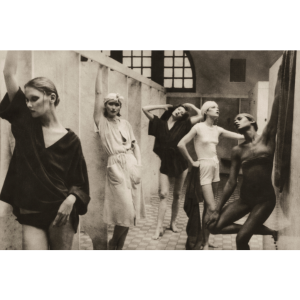The Devil in Art
By Jo Phillips
Faust, the protagonist of a classic German legend, is based on the historical figure Johann Georg Faust. Highly successful yet dissatisfied with his life, it leads him to make a pact with the Devil. The story was popularised in England by Christopher Marlowe, who gave it a classic treatment in his play The Tragical History of Doctor Faustus. In Goethe’s reworking of the story two hundred years after, Faust becomes a dissatisfied intellectual who yearns for “more than earthly meat and drink” in his life. Faust as a narrative has influenced the likes of Rembrandt, Delacroix, Thomas Mann, The Rolling Stones, Queen, and Rosemary’s Baby. This October, artist Philipp Humm will present his version, based on Goethe’s Faust, at Saatchi Gallery at the Start Art Fair.
As a former CEO in ‘high-tech’, at Vodafone and T-Mobile and as a vice president at Amazon, Humm’s insight into the make-up and moral dysfunction of some of the world’s powerful elite informed his artistic expression of a modern Faust.

The mythology of Faust is so powerful, legend says, that when Christopher Marlowe’s Elizabethan play Doctor Faustus was performed in an early production, the actual devils appeared on stage “to the great amazement of the actors and spectators”.
The story has inspired countless writers, artists, dramatists, composers and musicians ever since. Humm felt that it was time to of ourselves, living in the pleasures of the moment according to his own desires? Much like the world we live in today, with our credit cards and fast food, we opt for immediate gratification, even in the knowledge that it brings long-term pain.
Humm has used Goethe’s narrative as the compass for his own retelling of his ever-expanding body of work. Big, immersive and rattling with intellectual energy, each painting, each photograph
and artwork is referenced with a specific context that communicates emotions and ideas with a deeper social meaning.

For Humm, Faust is a tech giant modelled on Steve Jobs, dressed in Jobs’ “work uniform” of New Balance sneakers, jeans and a black turtleneck sweater. Like Faust, Jobs reached the pinnacle of his industry and technology, but the words on his deathbed were filled with regret. No detail is accidental in Humm’s visual narrative and language. Mephisto is dressed in the blue-suited attire of a hedge fund manager, whilst Napoleon is on horseback while the symbolic bull of Wall Street bucks with a warning on monetary policy.
In November 2019 Humm added to his Faustian oeuvre with The Last Faust, a theatrical feature-length art film which he wrote, cast, costumed and directed starring Steven Berkoff. In the film, Faust’s company is called Winestone inc (the English translation of the German name “Weinstein”). “Faust in the first part of the story acts more like a Weinstein than a Steve Jobs”, explains Humm. “He uses his position of power to seduce a 14-year-old girl and then ditches her.”

Set in 2059, Dr Goodfellow (Steven Berkoff), the company’s CEO has fled to his mother’s house with a robot assistant, Paris (Edwin De La Renta) and recounts the story of his predecessor Faust, played by Martin Hancock. Goodfellow is Faust’s successor, named after Ian Goodfellow who was heading Google Brain and is now at Apple heading machine learning. With Google and Apple linked together in the film as they are in reality, as tech giants reigning with unfettered control, the film touches on timeless and contemporary issues.
Humm’s observations power the narrative on corruption, love, power, fame, artificial intelligence through to contemporary references such as Harvey Weinstein, monetary policy and Silicon Valley.
“Having worked in high tech, I am an insider and understand the moral shortcomings of its leaders”, explains Humm.
Interestingly, Humm was leading a dual life as a tech revolutionary chief as the CEO of Vodafone. He painted in his spare time under a pseudonym, quietly sketching colleagues in meetings until 2015, when he was ‘outed’ on the front page of the Wall Street Journal. He made the leap from the boardroom to the studio and moved through the gears allowing his true ambitions to show through, sketching, painting, sculpting, taking photographs and even venturing into filmmaking.

Humm’s compositions have clues and motifs that help decode the different scenes from corporate life, celebrity culture, while popular culture plays out through the works Humm’s Faust is an extreme version of ourselves, living in the pleasures of the moment according to his own desires?
In transposing the story to the 21st Century, in the context of modern technology, Humm has created a cautionary tale. “We have not changed in 500 years”, he acknowledges. “Except that science and technology are far more advanced and dangerous. If you create a self-learning computer system more intelligent than yourself, it might attempt to save the planet by eliminating humans altogether.’
Find out more about the Saatchi Gallery, Duke of York’s HQ, King’s Rd, Chelsea London SW3 4RY please click here, for more information Philipp Humm exhibition please click here
If you enjoyed The Devil in Art why not read Powered Poems Here



